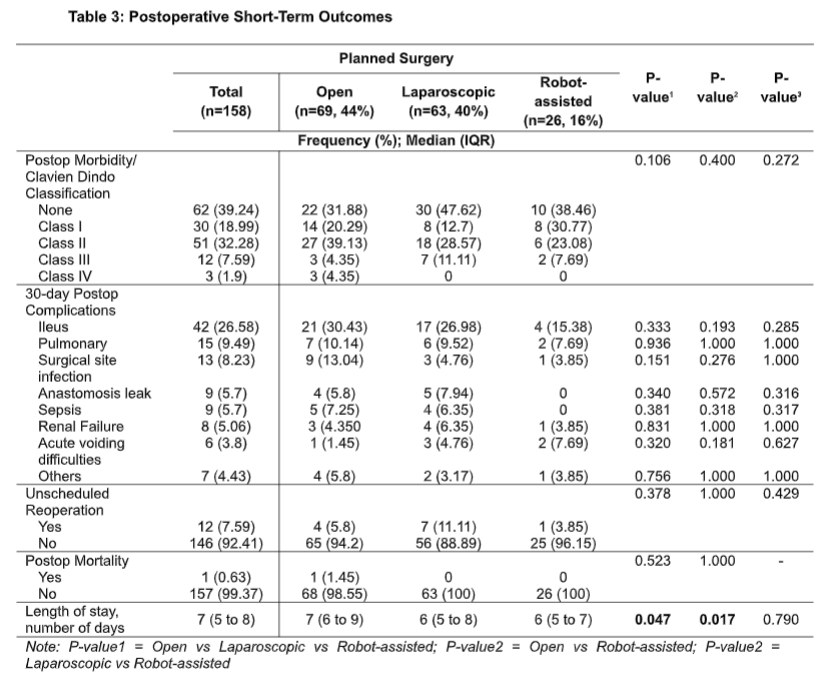eP503 - Comparative Analysis of Surgical Approaches for Rectal Cancer: Assessing Short-Term and Pathologic Outcomes in Open, Laparoscopic, and Robot-assisted Procedures

Marelle M. Yamzon (she/her/hers)
Surgery Resident
St. Luke's Medical Center, Quezon City
St. Luke's Medical Center, Quezon City
Quezon CIty, National Capital Region, PhilippinesAll of the relevant financial relationships listed below have been mitigated.
This individual has no financial relationships with ineligible companies.- AM
Alyanna Mae Cabonita Manching, n/a
Consultant
St. Luke's Medical Center
Taguig City, National Capital Region, PhilippinesDisclosure information not submitted.
- HM
Hermogenes J. Monroy, III, n/a
ASSOCIATE PROFESSOR 6
Philippine General Hospital and ST. LUKE'S MEDICAL CENTER GLOBAL CITY
Manila, National Capital Region, PhilippinesDisclosure information not submitted.
- AA
Andrei Cesar S. Abella, n/a
Active Consutlant
SLMC-GC
Taguig City, National Capital Region, PhilippinesDisclosure information not submitted.
- GM
Gilmyr Jude Marañon, n/a
Active Consultant
St. Luke’s Medical Center
Taguig, National Capital Region, PhilippinesDisclosure information not submitted.
ePoster Presenter(s)
Senior Author(s)
Author(s)
Discussion: Robot-assisted rectal cancer surgery offers short-term and pathologic outcomes that are comparable to both open and laparoscopic surgery.Postoperative Short-Term Outcomes
 Table 3 details the short-term outcomes across the treatment groups. Severe post- operative events, classified as CDC III and IV, were observed to be similar among all groups (8.7% for open surgery, 11.11% for laparoscopic, and 7.69% for robot-assisted, p = 0.11). The 30-day post-operative complications—comprising conditions like ileus, anastomotic leak, sepsis, etc.—as well as 30-day unscheduled reoperations and 30-day postoperative mortality rates, were consistent across all three surgical modalities. Notably, only one mortality was recorded, and this occurred in the open surgery group. In terms of length of hospital stay, patients who underwent minimally invasive procedures (both laparoscopic and robot-assisted) had a median hospital stay that was one day shorter than those who underwent open surgery (6 days for both minimally invasive methods vs. 7 days for open surgery, p = 0.047).
Table 3 details the short-term outcomes across the treatment groups. Severe post- operative events, classified as CDC III and IV, were observed to be similar among all groups (8.7% for open surgery, 11.11% for laparoscopic, and 7.69% for robot-assisted, p = 0.11). The 30-day post-operative complications—comprising conditions like ileus, anastomotic leak, sepsis, etc.—as well as 30-day unscheduled reoperations and 30-day postoperative mortality rates, were consistent across all three surgical modalities. Notably, only one mortality was recorded, and this occurred in the open surgery group. In terms of length of hospital stay, patients who underwent minimally invasive procedures (both laparoscopic and robot-assisted) had a median hospital stay that was one day shorter than those who underwent open surgery (6 days for both minimally invasive methods vs. 7 days for open surgery, p = 0.047).